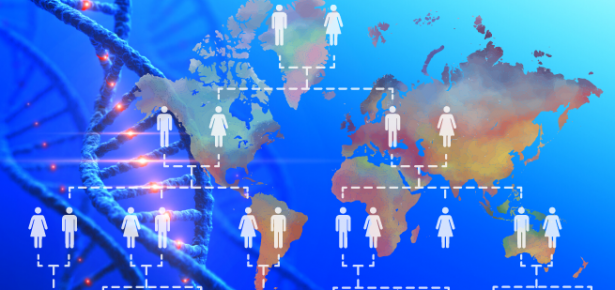
Millions of consumers throughout the world have placed their saliva in a vial, which they send to one of the dozens of DNA ancestry companies offering to provide them with a breakdown of the regions of the world where their ancestors lived. How these companies reach their findings from a person’s cells and their DNA remains a mystery to almost everyone who purchases the service. It is generally recognized that that people share 99.9% of their DNA. So, the science behind DNA ancestry must be based on the remaining 0.1% of the human genome.
Even as I possess a basic knowledge of genetics and its application to forensics, I was as flummoxed about the process of DNA ancestry analysis as everyone else. After two years of investigation, that brought me to reviewing hundreds of studies, interviewing experts in the field, examining patent applications, and culling through public interest reports of companies, I was able to gain a grasp of the science behind DNA ancestry testing.
My book is designed to make the insights and findings of my investigation available to a general audience. I have made ample use of graphic illustrations and provided the explanation of technical terms in a way that de-mystifies the science.
I began my investigation with a series of questions that are answered in the book.
• What parts of our genome are used to draw inferences about our ancestry and what is the scientific grounds for such claims?
• Do all companies use the same methodology for DNA ancestry analysis and, if not, how do they differ?
• Why do people get different results when they send their saliva to different companies?
• How do police use ancestry DNA results to solve crimes?
When we send in our saliva for a DNA ancestry testing companies send our DNA to third parties for some of the analysis. But their business model also includes selling our DNA sample to private companies or research institutions who build a large DNA database for their work. This raises questions about the privacy of our DNA information. The book discusses the importance of genetic privacy and how consumers can protect their DNA privacy even as they send in a DNA sample for analysis.
After your results are returned, companies provide the opportunity for you to connect with other DNA ancestry customers who have a similar enough profile as your that you may have a family connection. When people upload their results on open-access databases in order to find relatives, there is greater opportunity to lose control of the privacy of your information. The book discusses cases where police use open access DNA databases to find suspects of a crime and unbeknownst to you, your DNA sample may be used by the police if it appears on that database.
And if you have ever heard of people who discovered a family secret through DNA, you will find ample examples in the book of how DNA ancestry tests have upended families with results that seemed shocking and unimaginable prior to DNA analysis.
And if you have ever heard of people who discovered a family secret through DNA, you will find ample examples in the book of how DNA ancestry tests have upended families with results that seemed shocking and unimaginable prior to DNA analysis.
Title: Understanding DNA Ancestry
Author: Sheldon Krimsky
PB ISBN: 9781108816038
HB ISBN: 9781108841986
Latest Comments
Have your say!